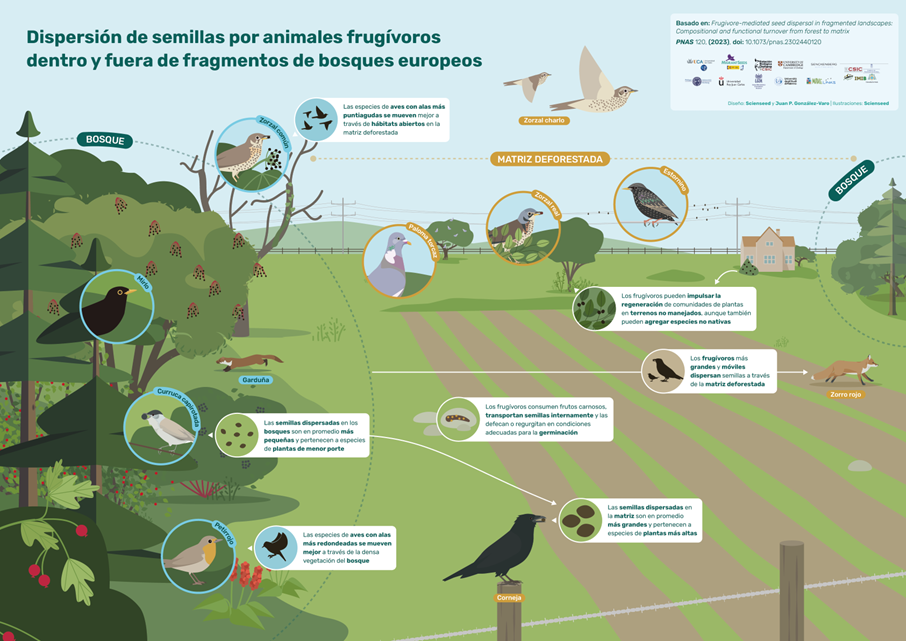Newsroom
Seed dispersal by frugivorous animals – those that feed partially or entirely on fruits – is important for plants that live in fragmented landscapes, where forests are often surrounded by a deforested matrix of agricultural fields and grasslands. This matrix occupies most of the earth's surface and, in this context, seed dispersal is essential so that plants can colonize areas where regeneration is possible.
Many plant species, especially trees and shrubs, produce fleshy fruits that reward frugivorous animals for the dispersal of their seeds, illustrating a mutualism that maintains the regeneration capacity of plant communities. A new study, published in the journal PNAS and with the participation of 14 researchers from 11 European institutions, has discovered that communities of frugivorous animals change from forest fragments to the deforested matrix, ultimately influencing the composition of the plants that They disperse through interactions between plant and animal species.
“Our study reveals a high replacement of frugivorous species that disperse seeds in forests and the surrounding matrix. This replacement leads to what ecologists call functional complementarity as different animals disperse seeds in a complementary manner in different habitats. “It is important to note that the replacement was not random, but was related to certain families of frugivores that possess attributes more suitable for living and moving through the open habitats of the matrix – for example, more pointed wings in birds,” he explains. Juan P. González-Varo, researcher at the University of Cádiz and lead author of this study.
The research has been based on plant-frugivore interaction networks, that is, the set of ecological interactions between animal species that disperse seeds of different plant species. The authors used DNA barcoding analysis (DNA barcoding) to identify the species of birds and mammals that dispersed the seeds sampled in the field. This technique, previously developed by members of the team, has allowed us to know which species of frugivores dispersed the seeds found in forest fragments and in the surrounding deforested matrix of seven fragmented landscapes in Europe.
“We sampled seeds dispersed under isolated trees in the matrix because birds often use them as perches when moving through open areas. “DNA barcodes tell us which species of frugivores contribute to dispersing seeds that can colonize deforested areas,” explains González-Varo.
A starting point for plant regeneration
The authors highlight that their findings on seed dispersal should influence plant regeneration both in forest fragments and in unmanaged areas of the matrix. Thus, the study highlights the importance of forest remnants as reservoirs of plant biodiversity and the seed dispersal services of frugivorous animals for the resilience of these ecosystems, that is, for the recovery of forests after deforestation.




